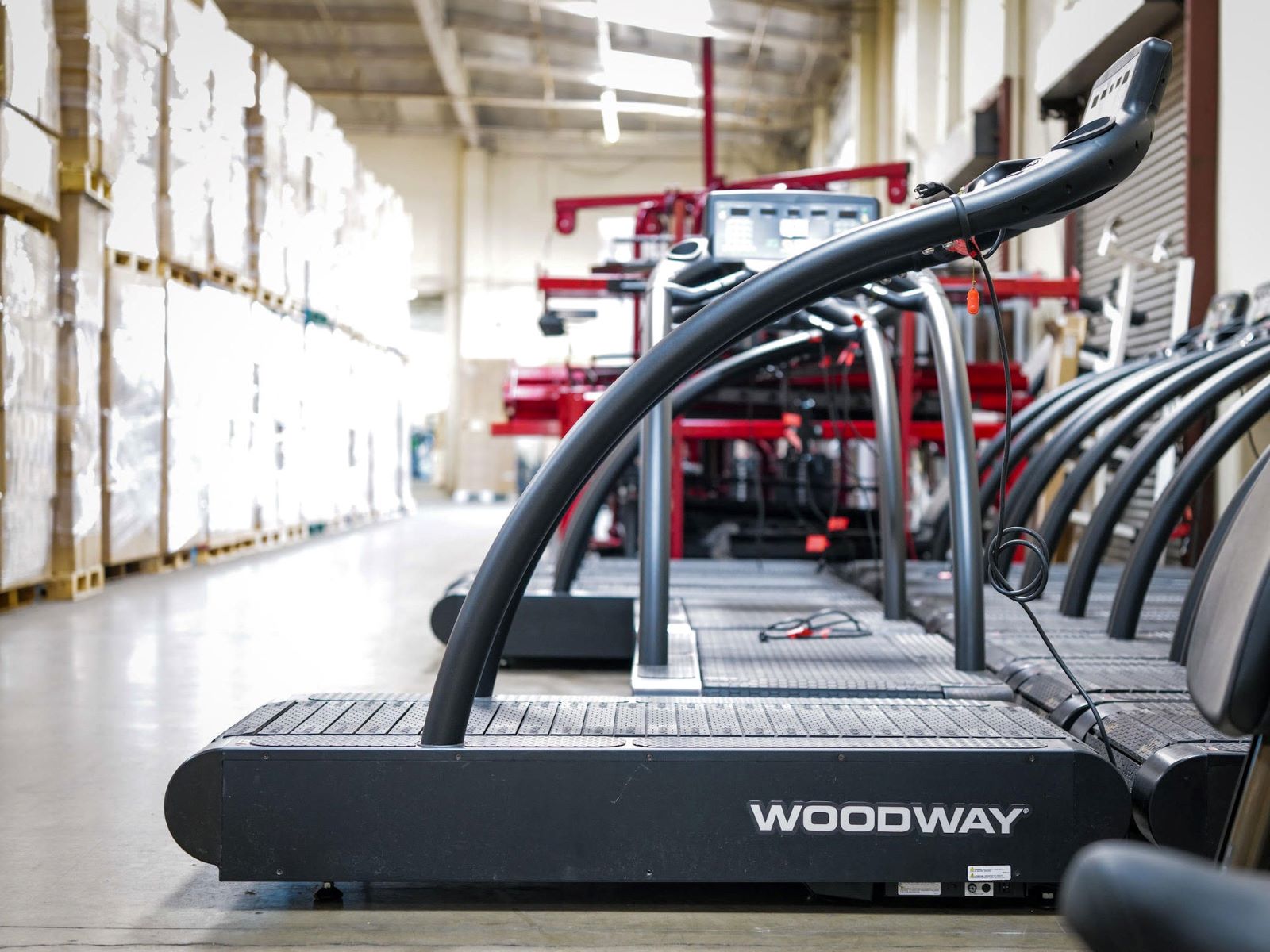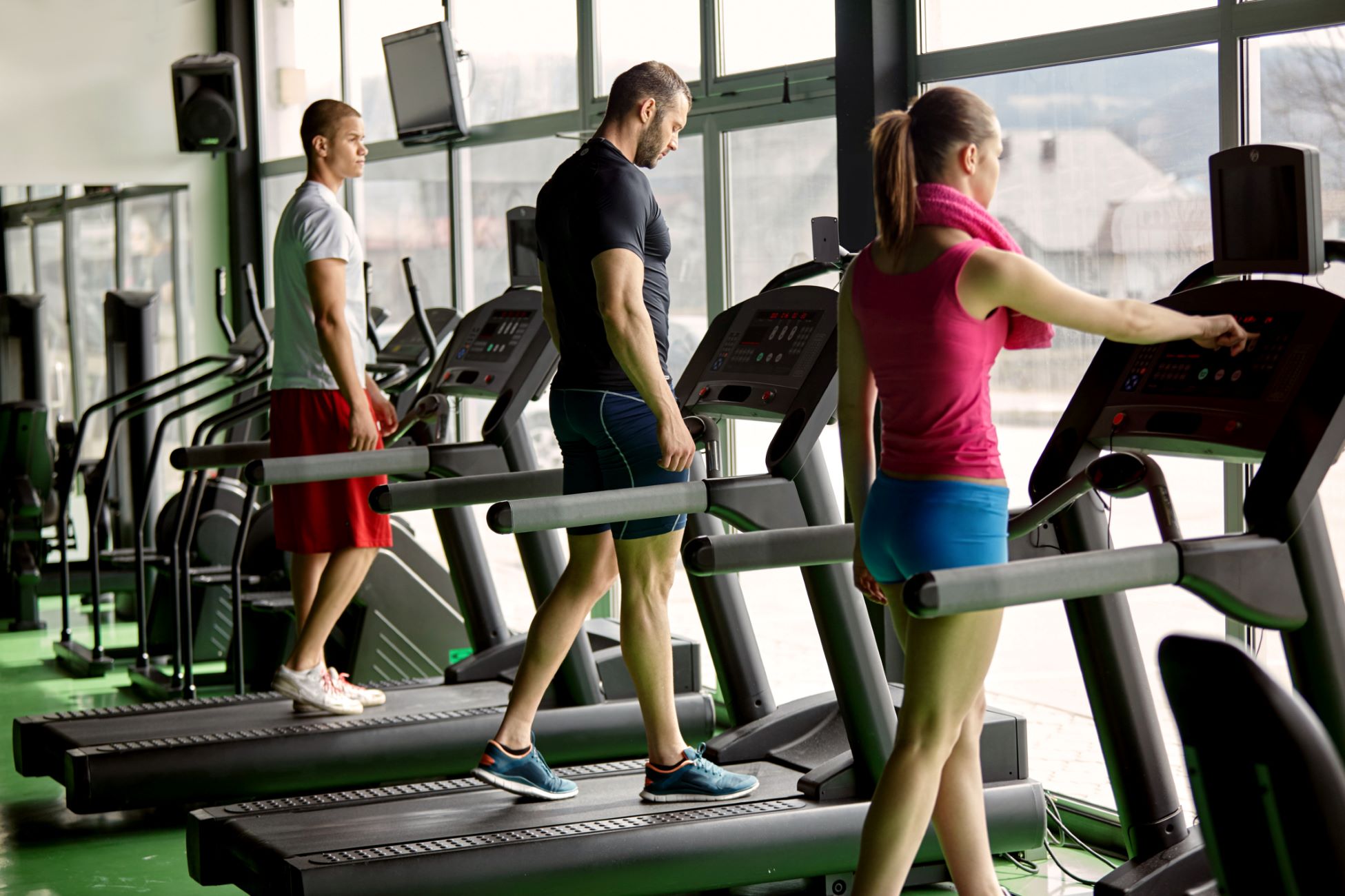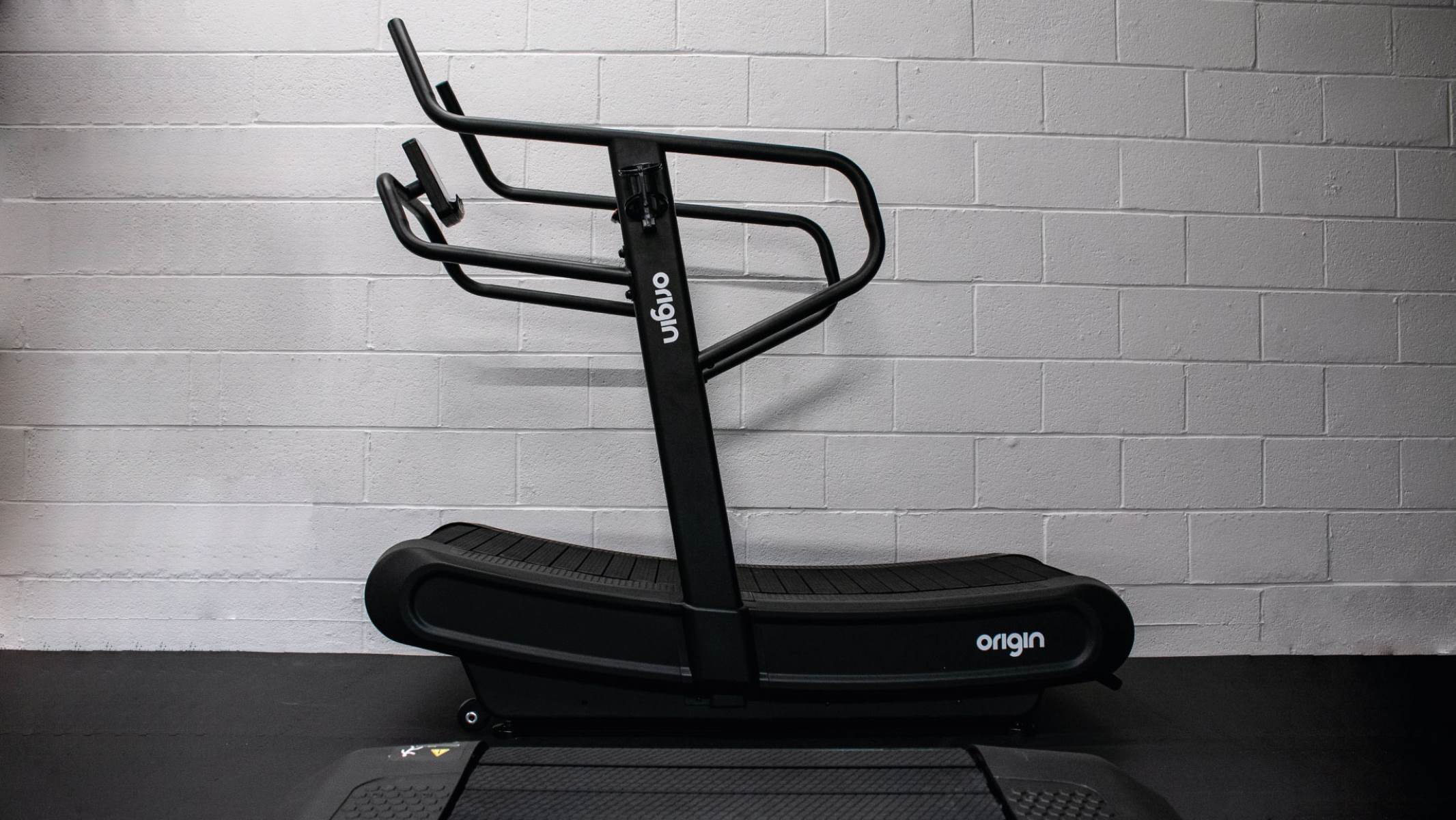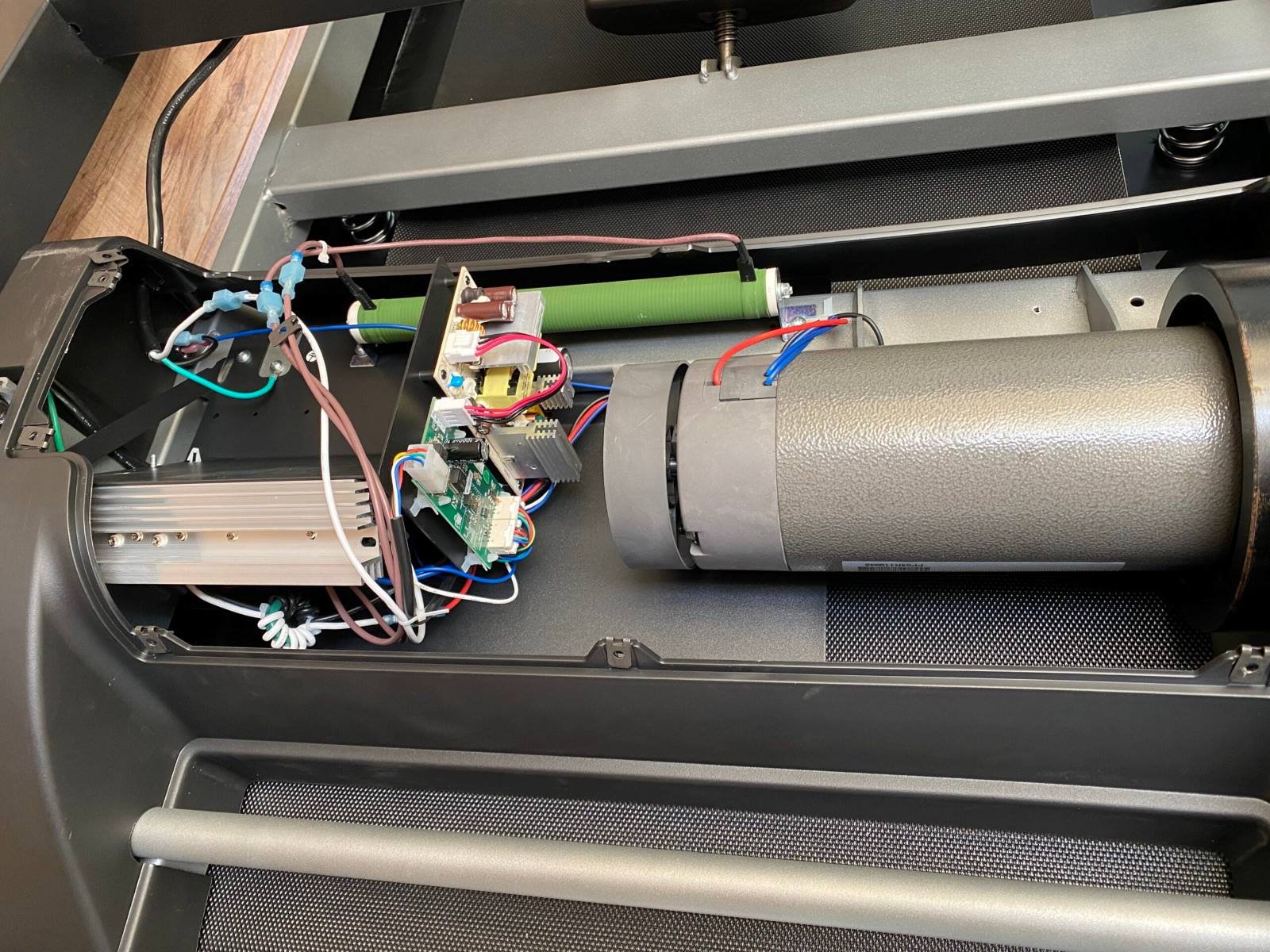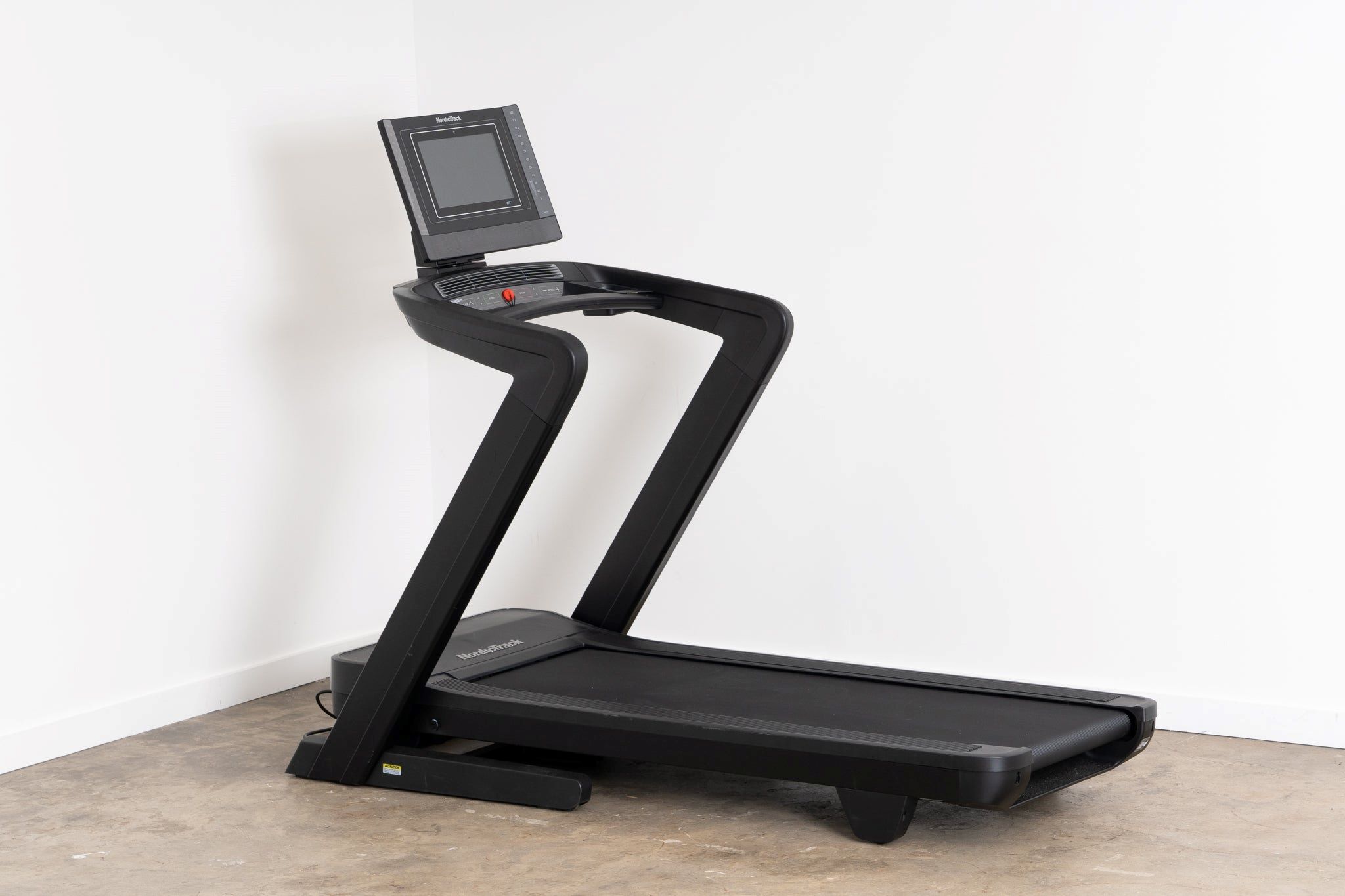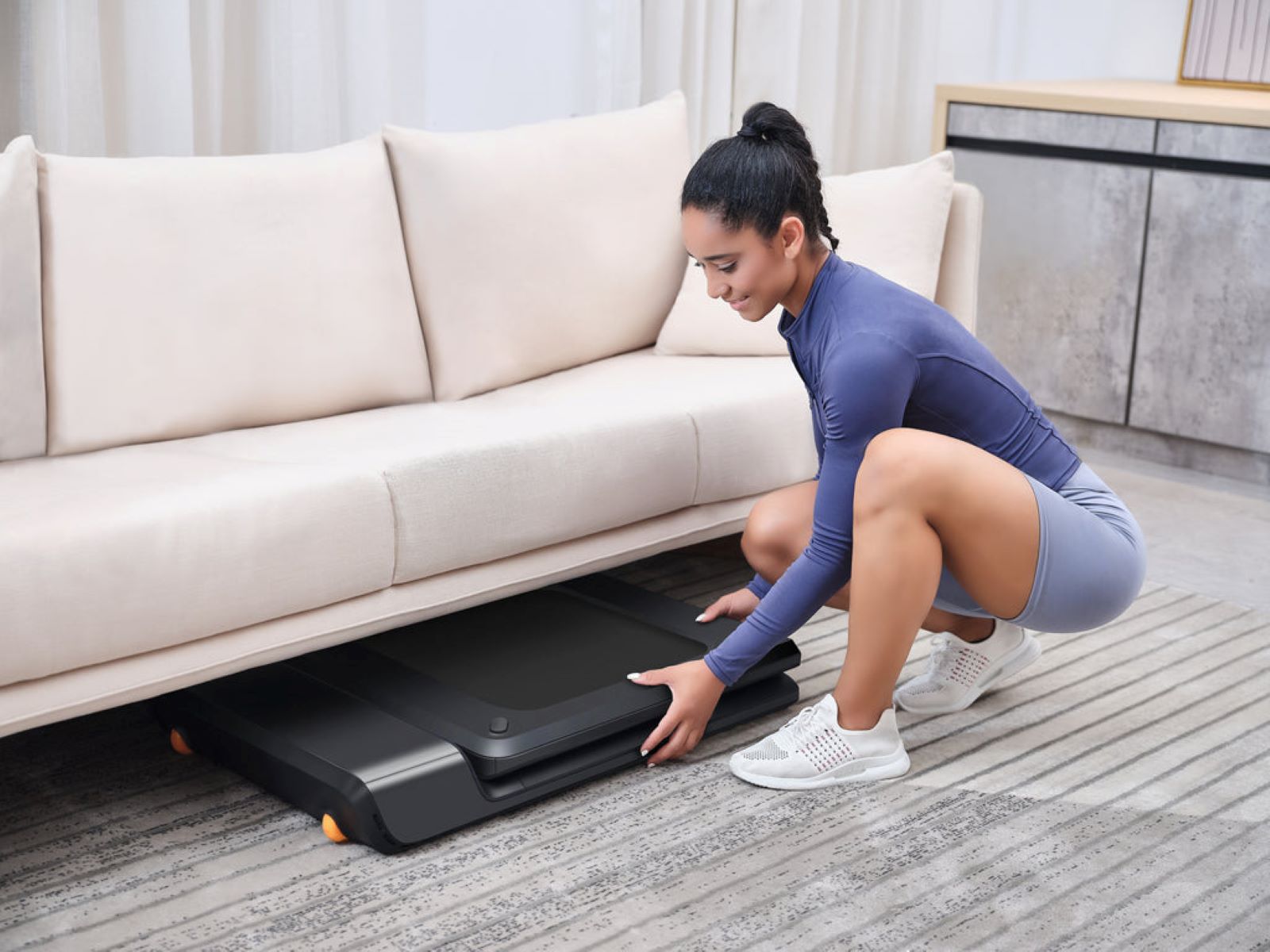

Featured
What To Do On The Treadmill
Modified: August 21, 2023
Looking for a featured workout on the treadmill? Discover what to do on the treadmill to push your fitness limits and achieve your goals.
Introduction
Welcome to the world of treadmill workouts! Whether you are a fitness enthusiast or a beginner looking to start your fitness journey, using a treadmill can be a great way to stay active and improve your cardiovascular health. With its convenience and versatility, the treadmill offers a wide range of workout options that can be tailored to your fitness level and goals.
In this article, we will explore the various benefits of using a treadmill and provide you with tips and guidelines on how to make the most out of your treadmill workouts. From setting up the treadmill correctly to incorporating different workout techniques, we will cover everything you need to know to have an effective and enjoyable exercise routine.
Using a treadmill offers numerous benefits for your overall health and fitness. First and foremost, it provides a convenient and accessible way to engage in physical activity. Whether you prefer to exercise in the comfort of your own home or at a gym, a treadmill allows you to get a workout in regardless of the weather conditions or time constraints.
Furthermore, treadmill workouts are highly effective for improving cardiovascular health. Running or brisk walking on a treadmill gets your heart rate up, which in turn strengthens your heart and improves blood circulation. Regular treadmill workouts can help lower blood pressure, reduce the risk of heart disease, and improve overall cardiovascular fitness.
Additionally, the treadmill offers a controlled environment for your workouts. You can easily adjust the speed and incline levels to match your fitness level and gradually increase them as you progress. This ability to customize the intensity of your workouts makes the treadmill suitable for individuals of all fitness levels, from beginners to advanced athletes.
Moreover, treadmill workouts can be a great way to burn calories and manage your weight. Running or walking on a treadmill engages multiple muscle groups, making it a full-body workout that helps build strength and endurance. By incorporating interval training and high-intensity interval training (HIIT) techniques, you can maximize calorie burn during your treadmill workouts.
In the following sections, we will delve into specific techniques and workouts that you can incorporate into your treadmill routine. From warm-up exercises and interval training to incline workouts and sprinting techniques, we will provide you with a comprehensive guide to make your treadmill workouts more effective and enjoyable.
So, let’s lace up our shoes, hop on the treadmill, and embark on a fitness journey that will help us achieve our health and wellness goals!
Benefits of Using a Treadmill
Using a treadmill as part of your exercise routine offers a wide range of benefits for your physical and mental well-being. Whether you are looking to improve cardiovascular health, manage your weight, or simply stay active, here are some key benefits of incorporating a treadmill into your workouts:
- Convenience and Accessibility: One of the major advantages of using a treadmill is the convenience it provides. You can workout anytime, regardless of the weather conditions or time constraints. Whether it’s early morning, late at night, or during your lunch break, you have the freedom to hop on the treadmill and get your workout in at your own pace.
- Cardiovascular Health: Treadmill workouts are highly effective for improving cardiovascular health. By walking, jogging, or running on a treadmill, you elevate your heart rate, strengthening your heart muscle and improving blood circulation. Regular treadmill workouts can help lower blood pressure, reduce the risk of heart disease, and improve overall cardiovascular fitness.
- Weight Management: Treadmill workouts are a great way to burn calories and manage your weight. Running or brisk walking on a treadmill engages multiple muscle groups, leading to increased calorie expenditure. By incorporating interval training or high-intensity interval training (HIIT) techniques, you can maximize calorie burn and boost your metabolism, helping you achieve your weight loss goals more efficiently.
- Joint-Friendly Exercise: Unlike outdoor running, treadmill workouts provide a cushioned surface that reduces the impact on your joints. This makes it a safe and suitable option for individuals with joint issues or those recovering from injuries. You can easily adjust the speed and incline levels to control the intensity and protect your joints while still getting an effective workout.
- Muscle Toning and Endurance: Using a treadmill engages multiple muscle groups, including the leg muscles, core, and even the upper body if you incorporate arm movements. This provides a full-body workout that helps build strength, tone muscles, and improve overall endurance. By gradually increasing the speed and incline levels, you can challenge your muscles and continually progress in your fitness journey.
- Mental Well-being: Exercise, including treadmill workouts, has been shown to have positive effects on mental health and well-being. Regular physical activity releases endorphins, which are known as “feel-good” hormones, helping to reduce stress, improve mood, and boost overall mental clarity. Using a treadmill allows you to carve out dedicated time for yourself, providing an opportunity to clear your mind and improve your mental well-being.
These are just a few of the many benefits of incorporating a treadmill into your exercise routine. By making regular use of this versatile fitness equipment, you can enhance your overall fitness, improve your cardiovascular health, manage your weight, and enjoy the convenience of exercising from the comfort of your own home or gym.
Setting Up the Treadmill Correctly
Properly setting up your treadmill is crucial for a safe and effective workout. Before hopping on, take the time to ensure that your treadmill is set up correctly and adjusted to your specific needs. Here are some important steps to follow when setting up your treadmill:
- Choose a Suitable Location: Select a location in your home or gym that provides enough space for the treadmill and allows for proper ventilation. Make sure the area is well-lit and free from any obstacles that could interfere with your workout.
- Level the Treadmill: Use a level to ensure that the treadmill is set up on a flat surface. Adjust the leveling feet or place a mat underneath to stabilize the treadmill if needed. A leveled treadmill will provide a more comfortable and safer workout experience.
- Plug In and Adjust the Power: Plug the treadmill into a grounded electrical outlet and make sure the power cord is secure. Adjust the power settings as per the manufacturer’s instructions and ensure that the treadmill display is functioning properly.
- Set the Speed and Incline: Familiarize yourself with the controls for adjusting speed and incline. Start with a comfortable walking or jogging speed and gradually increase it as you get accustomed to the treadmill. Adjust the incline level to add variation and challenge to your workouts.
- Attach the Safety Clip: Most treadmills come with a safety clip that should be attached to your clothing. The safety clip is designed to automatically stop the treadmill if you accidentally fall or step off the belt, ensuring your safety during the workout.
- Test the Emergency Stop Button: Locate and test the emergency stop button on the treadmill. Familiarize yourself with its position and functionality to ensure that you can quickly stop the treadmill in case of an emergency or discomfort.
- Check the Belt Tension: The treadmill belt should be properly tensioned for a smooth and comfortable workout. It should be neither too loose nor too tight. Adjust the belt tension as per the manufacturer’s instructions to ensure it moves smoothly under your feet.
- Read and Follow the User Manual: Every treadmill model is unique, so it’s essential to read the user manual provided by the manufacturer. Familiarize yourself with the specific features and safety guidelines of your treadmill to ensure you are using it correctly.
By following these steps and taking the time to set up your treadmill correctly, you can ensure a safe and enjoyable workout experience. Remember to consult the user manual for any additional instructions specific to your treadmill model, and always prioritize safety when using any exercise equipment.
Warm-Up Exercises
A proper warm-up is essential before starting any workout, including treadmill exercises. The purpose of a warm-up is to prepare your body for the upcoming physical activity by gradually increasing your heart rate, loosening up your muscles, and improving joint mobility. Here are some effective warm-up exercises to incorporate into your treadmill routine:
- Walking or Slow Jogging: Begin your warm-up by walking or slow jogging on the treadmill at a comfortable pace. This helps elevate your heart rate and gradually increases blood flow to your muscles, preparing them for more intense activity. Start with a gentle pace and gradually increase the speed as you warm up.
- Dynamic Stretches: Perform a series of dynamic stretches to improve joint mobility and warm up your muscles. Some effective stretches to incorporate include leg swings, arm circles, lunges with a twist, and high knees. Dynamic stretches involve continuous movement and should be performed in a controlled manner to avoid overstretching.
- Toe Touches and Leg Swings: Stand next to the treadmill and perform toe touches by reaching down towards your toes, keeping your legs straight and engaging your hamstrings and lower back muscles. After that, perform leg swings by holding onto the treadmill or a stable object and swinging one leg forward and backward in a controlled manner. Switch legs and repeat.
- Side Lunges: Stand with your feet shoulder-width apart and take a wide step to the side, bending one knee while keeping the other leg straight. Engage your inner thighs and glutes as you push back to the starting position. Repeat on the other side. Side lunges help warm up the hips and leg muscles.
- Arm Circles: Extend your arms out to the sides and make small circles with your wrists. Gradually increase the size of the circles and move your arms forward and backward. This exercise helps warm up the shoulders and upper body muscles.
Remember to perform each warm-up exercise in a controlled and gentle manner, focusing on proper form and breathing. Aim to spend at least 5-10 minutes on your warm-up to adequately prepare your body for the upcoming treadmill workout.
It’s important to note that warm-up exercises may vary based on individual preferences and fitness levels. If you have any underlying health conditions or specific concerns, consult with a healthcare professional or a certified fitness instructor to determine the most suitable warm-up exercises for you.
By incorporating these warm-up exercises into your treadmill routine, you can reduce the risk of injuries, improve your performance, and enhance your overall workout experience. So, before you start those intense treadmill workouts, take the time to properly warm up and get your body ready for action!
Interval Training
Interval training is a highly effective and efficient method of getting the most out of your treadmill workouts. It involves alternating between periods of high-intensity exercise and periods of recovery or lower-intensity exercise. This type of training challenges your cardiovascular system, boosts calorie burn, and improves overall fitness. Here’s how you can incorporate interval training into your treadmill routine:
- Choose Your Intervals: Decide on the duration and intensity of your intervals based on your fitness level and goals. A common approach is to alternate between periods of high intensity, such as running or sprinting, and periods of lower intensity, such as walking or jogging.
- Warm-Up: Begin with a 5-10 minute warm-up of walking or light jogging to prepare your body for the workout. It’s important to gradually increase your heart rate and loosen up your muscles before diving into the high-intensity intervals.
- High-Intensity Intervals: Increase the speed to a challenging pace for a set period of time, such as 30 seconds or 1 minute. Push yourself to a level where you feel a significant increase in effort and your heart rate is elevated. This could include a fast-paced run or an all-out sprint, depending on your fitness level.
- Recovery Intervals: After completing a high-intensity interval, slow down the pace or reduce the incline to allow your heart rate to recover. This can be a period of walking or light jogging, giving your body time to catch its breath before the next intense interval.
- Repeat: Continue alternating between high-intensity and recovery intervals for your desired duration. Aim for at least 4-6 intervals, gradually increasing the intensity and duration as your fitness level improves.
Interval training not only helps maximize calorie burn during your workout but also increases your post-workout calorie expenditure. This is known as the afterburn effect or excess post-exercise oxygen consumption (EPOC). The intense bursts of exercise during the high-intensity intervals stimulate your metabolism and keep it elevated even after you finish your workout.
Moreover, interval training can help improve your endurance, speed, and overall cardiovascular fitness. By challenging your body with short bursts of intense exercise, you train your heart and lungs to work more efficiently, allowing you to sustain higher levels of effort for longer periods of time.
Remember to listen to your body and adjust the intensity of your intervals based on your fitness level. It’s important to gradually increase the intensity and duration of the intervals to avoid overexertion or injury. If you’re new to interval training, start with shorter intervals and longer recovery periods, gradually building up to more intense intervals as your fitness improves.
So, whether you’re looking to boost your calorie burn, improve your cardiovascular fitness, or simply add some variety to your treadmill workouts, interval training is a fantastic technique to incorporate into your routine. Push yourself, challenge your limits, and reap the rewards of this effective training method!
Cardiovascular Workouts
Cardiovascular workouts on a treadmill offer a wide range of benefits for your heart health, endurance, and overall fitness. These workouts focus on elevating your heart rate and keeping it in the target heart rate zone for an extended period. Here are some effective cardiovascular workouts you can incorporate into your treadmill routine:
- Steady-State Jogging or Running: Set a comfortable pace that allows you to maintain a steady jog or run for an extended period of time. This is typically around 60-70% of your maximum heart rate. Aim to sustain this pace for at least 20-30 minutes, gradually increasing the duration as your fitness level improves.
- Interval Cardio: Combine intervals of high-intensity running or sprinting with active recovery periods. Alternate between a challenging pace that elevates your heart rate significantly and a slower pace that allows for recovery. This variation in intensity helps improve cardiovascular fitness and increases calorie burn.
- Hill Repeats: Increase the incline on the treadmill to simulate uphill running or walking. This engages different muscle groups and intensifies the cardiovascular demands of the workout. Start with a moderate incline and gradually increase it as you progress. Alternate between uphill sprints or brisk walks and flat or downhill recovery periods.
- Aerobic Intervals: Set the treadmill at a moderate pace, where you can maintain a conversation but feel slightly out of breath. Alternate between 3-4 minutes at this moderate pace and 1-2 minutes at a challenging pace that pushes your cardiovascular system. Repeat this cycle for the desired duration, gradually increasing the duration of challenging intervals as your fitness improves.
- Pyramid Workout: Begin with a warm-up at an easy pace, then gradually increase the speed or incline every 2-3 minutes until you reach your desired peak intensity. Once you reach the peak, gradually decrease the intensity back to the starting point. This pyramid-shaped workout helps improve endurance and challenges your cardiovascular system.
When performing cardiovascular workouts on a treadmill, it’s important to monitor your heart rate to ensure you are in the target heart rate zone. The target heart rate zone is typically around 50-85% of your maximum heart rate, depending on your age and fitness level. Using the built-in heart rate monitor on the treadmill or wearing a heart rate monitor can help you stay within this range and ensure you’re getting an effective cardiovascular workout.
Remember to gradually increase the duration and intensity of your cardiovascular workouts to avoid overexertion or injury. Start with shorter durations and lower intensities, gradually working your way up as your fitness level improves.
Cardiovascular workouts on a treadmill not only improve your heart health and endurance but also burn calories, enhance your mood, and boost overall fitness. By incorporating these workouts into your routine, you can experience the benefits of cardiovascular exercise and take your fitness to the next level!
Incline Training
Incorporating incline training into your treadmill workouts can help you increase the intensity, challenge your muscles, and simulate outdoor hiking or running. By adding an incline to your treadmill, you engage different muscle groups and elevate the overall difficulty of your workout. Here are some ways to incorporate incline training into your treadmill routine:
- Gradual Incline: Start with a gentle incline of around 1-2% to simulate outdoor running or walking on a flat surface. This slight incline engages your muscles differently than walking or running on a flat surface and increases the intensity of your workout without putting excessive stress on your joints.
- Hill Training: Increase the incline to simulate uphill running or hiking. By adding a steeper incline, you engage your glutes, quadriceps, and calf muscles more intensely. Start with a moderately steep incline, such as 5%, and gradually increase it as your fitness level improves.
- Interval Incline: Combine intervals of running or walking on an incline with periods of recovery on a flat surface. Alternate between challenging incline intervals and recovery intervals to vary the intensity and engage different muscle groups. This type of workout helps improve lower body strength, endurance, and cardiovascular fitness.
- Descending Incline: After a challenging uphill interval, decrease the incline gradually to simulate a downhill descent. This engages different muscles and allows for active recovery. Be mindful of your form and pace during the descending incline to avoid putting excessive stress on your joints.
- Incline Pyramid: Start with a low incline and gradually increase it to a peak, then gradually decrease back to the starting incline. Each interval can be a few minutes long, gradually increasing the time spent on higher inclines. This pyramid-style workout challenges your muscles and cardiovascular system at different intensities.
When performing incline training, it’s important to maintain proper form and posture. Keep your chest lifted, engage your core, and use your arms to help maintain balance and momentum. It’s also essential to listen to your body and adjust the incline and intensity based on your fitness level and comfort.
Incline training not only helps build lower body strength and endurance but also increases calorie burn and cardiovascular fitness. By incorporating these workouts into your treadmill routine, you can simulate outdoor terrain, challenge your muscles, and take your fitness to new heights.
Remember to warm up properly before starting incline training and gradually increase the intensity and duration of your workouts. As with any type of exercise, it’s important to listen to your body and consult with a healthcare professional or fitness instructor if you have any underlying health conditions or concerns.
So, adjust that incline, engage those muscles, and experience the benefits of incline training on your treadmill!
HIIT (High-Intensity Interval Training) Workouts
HIIT, or High-Intensity Interval Training, is a popular and effective workout method that involves short bursts of intense exercise followed by brief recovery periods. This type of training not only helps burn calories quickly but also improves cardiovascular fitness, boosts metabolism, and enhances overall endurance. Here’s how you can incorporate HIIT workouts into your treadmill routine:
- Warm-Up: Begin with a 5-10 minute warm-up of light jogging or brisk walking to prepare your body for the intense intervals. Gradually increase your heart rate and warm up your muscles to prevent injuries and maximize the effectiveness of your workout.
- Intense Intervals: Increase the speed or incline on the treadmill to a high-intensity level that challenges your cardiovascular system. Sprinting or running at a near-maximum effort or setting a steep incline will do the trick. Perform the intense interval for a short duration, typically 20-30 seconds to start, focusing on maintaining proper form and giving it your all.
- Recovery Intervals: After the intense interval, slow down the pace or reduce the incline to allow your heart rate to recover. This is a crucial period for your body to catch its breath before the next intense interval. Active recovery, such as walking or jogging at a slower pace, can help improve blood flow and prepare your body for the next round of intense exercise.
- Repeat: Continue alternating between the high-intensity and recovery intervals for a desired number of rounds. Aim for at least 8-10 rounds, gradually increasing the intensity and duration of the intense intervals as your fitness level improves.
HIIT workouts are known to be time-efficient and highly effective for improving cardiovascular performance. By pushing your body to its limits during the intense intervals, you stimulate your heart and lungs to work harder, thus increasing your overall fitness level.
In addition to increasing cardiovascular fitness, HIIT workouts also lead to an afterburn effect, or excess post-exercise oxygen consumption (EPOC), which can extend your calorie burn even after your workout is complete. This makes HIIT an effective method for weight management and fat loss.
It’s important to note that HIIT workouts are highly intense and may not be suitable for everyone. If you are a beginner or have any underlying health conditions, it’s crucial to consult with a healthcare professional or certified fitness instructor to determine if HIIT is appropriate for you. Listening to your body, maintaining proper form, and gradually increasing the intensity over time are essential for a safe and effective HIIT workout.
So, get ready to push your limits, break a sweat, and experience the benefits of HIIT on your treadmill. Incorporating these intense intervals into your routine will elevate your fitness level, increase calorie burn, and take your workouts to a whole new level!
Sprinting Techniques
Sprinting is a powerful exercise that helps build speed, explosiveness, and cardiovascular fitness. Incorporating sprinting into your treadmill workouts can take your fitness routine to a whole new level. Whether you’re an experienced athlete or a beginner, here are some sprinting techniques to help you get the most out of your treadmill sprinting sessions:
- Proper Warm-up: Before starting your sprinting session, it’s essential to properly warm up your body. Begin with a 5-10 minute warm-up of light jogging or brisk walking to increase blood flow and loosen up your muscles. This helps prepare your body for the intense sprinting ahead.
- Gradual Speed Build-up: Start your sprinting session with an easy jog or moderate run to gradually build up your speed. Begin at a comfortable pace and gradually increase your speed as your muscles warm up. This allows your body to adapt to the increased intensity of sprinting.
- Explosive Starts: When starting your sprint, focus on explosive power. Drive your knees up, extend your stride, and push off your toes to generate maximum speed. This initial burst of energy helps propel you forward and sets the tone for the rest of your sprinting session.
- Short Intervals: Sprinting is an intense exercise, so it’s important to keep the duration of each sprint relatively short. Aim for 10-30 second sprints, depending on your fitness level and capabilities. Focus on maintaining a high level of effort throughout each sprint.
- Complete Recovery: When sprinting at maximum effort, it’s crucial to allow for adequate recovery between sprints. Take a complete rest or walk for recovery, allowing your heart rate to come down before starting the next sprint. The goal is to maintain the quality of each sprint and perform at maximum effort.
- Progressive Overload: As your fitness level improves, gradually increase the intensity and duration of your sprints. You can increase the speed or incline, extend the sprinting duration, or reduce the recovery time. This progressive overload principle helps challenge your body and continually improve your speed and performance.
- Cool Down: After completing your sprinting session, it’s crucial to cool down and allow your body to recover. Decrease your intensity by gradually slowing down your pace or walking for a few minutes. This helps prevent dizziness and allows your heart rate to return to its normal range.
Remember, sprinting is a high-intensity exercise that places significant demands on your body. It’s important to listen to your body, maintain proper form, and avoid overexertion to reduce the risk of injury. If you’re new to sprinting or have any concerns, consult with a certified fitness professional to provide guidance and ensure your safety.
By incorporating sprinting techniques into your treadmill workouts, you can improve your speed, power, and cardiovascular fitness. So lace up your shoes, get ready to explode off the starting line, and experience the exhilaration of sprinting on your treadmill!
Endurance Training
Endurance training on a treadmill is an excellent way to build stamina, improve cardiovascular fitness, and enhance your overall endurance. Whether you’re training for a long-distance race or simply aiming to increase your endurance capacity, here are some effective techniques to incorporate into your treadmill workouts:
- Long-Distance Runs: Set a steady pace that you can maintain for an extended period of time. Begin with a comfortable speed and aim to sustain it for at least 30 minutes or longer. Gradually increase the duration of your long-distance runs as your fitness level improves.
- Tempo Runs: Tempo runs involve running at a faster pace than your usual comfortable pace. Choose a challenging speed that is sustainable for a prolonged duration. Tempo runs improve your lactate threshold and train your body to maintain a faster pace over a longer distance.
- Progressive Runs: Begin with a slower warm-up pace and gradually increase your speed throughout the run. Aim to finish at a challenging pace, closer to your race pace. This type of run helps simulate the fatigue you may experience during a long-distance event and trains your body to maintain a faster pace despite the increasing fatigue.
- Interval Endurance: Incorporate intervals into your endurance training. Alternate between periods of high-intensity running or brisk walking and periods of recovery. For example, sprint for 1 minute followed by a 1-minute recovery walk or jog. This variation challenges your cardiovascular system and improves your ability to recover quickly.
- Fartlek Training: Fartlek, meaning “speed play” in Swedish, involves incorporating spontaneous, unstructured speed changes into your run. During your workout, vary your pace by randomly alternating between fast bursts of running and recovery periods at a slower pace. This type of training builds mental fortitude and prepares you for the unpredictability of outdoor running events.
When focusing on endurance training, it’s important to find a pace that challenges you but is sustainable over a longer period. Listening to your body, maintaining proper form, and gradually increasing the duration and intensity of your workouts will help prevent overexertion and reduce the risk of injuries.
Incorporating endurance training into your treadmill routine not only helps increase your stamina and cardiovascular fitness but also prepares your body for outdoor activities, such as long-distance running, hiking, or cycling. Gradually increasing your endurance capacity allows you to participate in events or enjoy extended periods of physical activity with confidence and improved performance.
Remember to stay hydrated, fuel your body with proper nutrition before and after your workouts, and allow your body enough rest and recovery time. Consistency and patience are key when it comes to endurance training.
So, challenge your limits, push through the mental barriers, and experience the benefits of endurance training on your treadmill. Each step brings you closer to greater stamina, improved cardiovascular fitness, and increased overall endurance!
Cool-Down Exercises
Cooling down after a treadmill workout is just as important as warming up. It allows your body to gradually return to its resting state, prevents dizziness or lightheadedness, and helps reduce muscle soreness. Here are some essential cool-down exercises to incorporate into your post-treadmill routine:
- Slow Jog or Walk: After completing your workout, gradually decrease the intensity of your run to a gentle jog or walk. This helps lower your heart rate gradually and allows your body to transition from exercise to a resting state. Aim to maintain a comfortable pace for 5-10 minutes.
- Static Stretching: Stretching helps improve flexibility, relaxes your muscles, and reduces post-workout tension. Focus on stretching all major muscle groups, including your hamstrings, quadriceps, calves, glutes, and hips. Hold each stretch for 15-30 seconds and remember to breathe deeply throughout each stretch.
- Foam Rolling: Using a foam roller after your workout can help release muscle tension and improve circulation. Roll over tight or sore areas, applying gentle pressure to release any knots or trigger points. Focus on areas like your calves, quads, hamstrings, and glutes.
- Deep Breathing and Relaxation: Take a few minutes to practice deep breathing and relaxation techniques. Sit or lie down in a comfortable position and inhale deeply through your nose, filling your lungs with air. Exhale slowly through your mouth, letting go of any tension or stress. Repeat this deep breathing exercise for a few minutes to calm your body and mind.
- Hydration and Nutrition: Rehydrate your body by drinking water or a sports drink to replenish the fluids lost during your workout. It’s also important to refuel your body with a nutritious post-workout snack or meal, including a balance of carbohydrates and protein to aid in muscle recovery and repair.
Engaging in cool-down exercises helps prevent pooling of blood in your muscles, aids in removing waste products such as lactic acid, and promotes a gradual return to your normal heart rate and blood pressure. It also helps reduce muscle soreness, stiffness, and the risk of post-workout muscle tightness.
In addition to the physical benefits, cool-down exercises provide an opportunity to mentally unwind and transition out of your workout routine. Take the time to reflect on your accomplishments, set new goals, and appreciate the efforts you’ve put into your workout.
Remember that cool-down exercises can be flexible and tailored to your preferences. If you find other stretching or relaxation techniques that work for you, feel free to incorporate them into your routine. The key is to gradually lower your heart rate, stretch your muscles, and allow your body to recover.
By consistently incorporating cool-down exercises into your treadmill routine, you can promote optimal recovery, reduce muscle soreness, and improve overall flexibility. Take care of your body and make cool-down exercises an essential part of every workout session!
Safety Precautions and Tips
While using a treadmill is generally considered safe, it’s important to prioritize safety to prevent accidents and minimize the risk of injuries. Here are some essential safety precautions and tips to keep in mind during your treadmill workouts:
- Read the User Manual: Familiarize yourself with the specific features and guidelines of your treadmill by reading the user manual provided by the manufacturer. Understanding how to properly operate the treadmill and its safety features is essential for a safe workout experience.
- Wear Appropriate Attire: Choose comfortable workout clothes and supportive footwear that provide stability and minimize the risk of slipping or tripping. Avoid loose clothing that may get caught in the moving parts of the treadmill.
- Use the Safety Clip: Most treadmills come equipped with a safety clip that attaches to your clothing. Make sure to securely attach the safety clip to your clothing before starting your workout. This will automatically stop the treadmill in case of an accidental fall or step-off.
- Start with a Warm-Up: Always begin your treadmill workout with a warm-up session to prepare your body for the physical exertion. A proper warm-up helps increase blood flow, loosen up your muscles, and reduce the risk of injury.
- Pay Attention to Form: Maintain good posture and proper running or walking form while using the treadmill. Avoid excessive leaning forward or backward, as it can strain your muscles and impact your balance. Engage your core muscles and keep your head up, focusing on a natural and comfortable stride.
- Stay Hydrated: Drink plenty of water before, during, and after your treadmill workouts to stay hydrated. Dehydration can lead to dizziness, muscle cramps, and fatigue, so it’s important to replenish fluid levels throughout your workout.
- Monitor Your Heart Rate: If your treadmill is equipped with a heart rate monitor, use it to keep track of your heart rate and ensure you are working within your target heart rate zone. This can help you gauge the intensity of your workout and prevent overexertion.
- Gradually Increase Intensity: Avoid sudden increases in speed or incline levels, especially if you’re new to treadmill workouts. Gradually increase the intensity and duration of your workouts over time to allow your body to adapt and minimize the risk of strains or injuries.
- Be Aware of Surroundings: If you’re using a treadmill in a public setting, be mindful of your surroundings. Avoid distractions, such as using your phone or listening to loud music, that may affect your focus and balance. Stay aware of other users and maintain a safe distance from others.
- Listen to Your Body: Pay attention to any signs of discomfort, pain, or excessive fatigue during your treadmill workouts. If you experience any unusual symptoms, such as shortness of breath, dizziness, or chest pain, stop your workout immediately and seek medical attention if needed.
These safety precautions and tips are important to protect yourself and ensure a safe and enjoyable treadmill workout experience. Always prioritize your safety, listen to your body, and seek guidance from a healthcare professional or certified fitness instructor if you have any concerns or underlying health conditions.
Remember, safety should be the top priority when using any exercise equipment, including treadmills. By following these guidelines and using common sense, you can minimize the risk of accidents and injuries, allowing you to focus on achieving your fitness goals in a safe and effective manner.
Conclusion
Using a treadmill as part of your fitness routine offers numerous benefits for your overall health and well-being. From improving cardiovascular health and managing weight to increasing endurance and building muscle strength, the treadmill provides a versatile and convenient platform for achieving your fitness goals.
Throughout this article, we have explored various aspects of treadmill workouts, including the benefits of using a treadmill, setting up the equipment correctly, warm-up exercises, interval training, cardiovascular workouts, incline training, HIIT workouts, sprinting techniques, endurance training, cool-down exercises, and safety precautions.
By understanding the different techniques and incorporating them into your treadmill routines, you can make your workouts more effective, challenging, and enjoyable. Whether you’re a beginner or an experienced athlete, there are a wide variety of options to cater to your fitness level and goals.
Remember to prioritize safety by following the recommended safety precautions and guidelines. Pay attention to your body, listen to any warning signs, and seek professional advice if needed. Gradually increase the intensity and duration of your workouts to avoid overexertion or injury.
Consistency, dedication, and a positive mindset are key to maximizing the benefits of treadmill workouts. Set realistic goals, track your progress, and celebrate the small victories along the way. Keep challenging yourself and varying your workouts to prevent boredom and plateauing.
Whether you choose to walk, jog, run, or incorporate interval training or incline workouts, the treadmill is a versatile tool that can help you stay active, improve your cardiovascular fitness, and enhance your overall well-being. So, lace up those shoes, step onto the treadmill, and embark on a fitness journey that will lead you to a healthier, stronger, and happier you!


